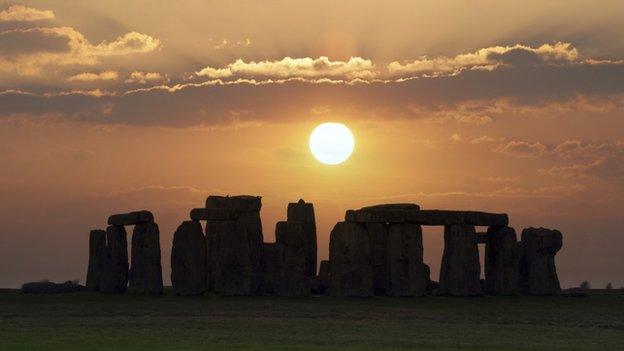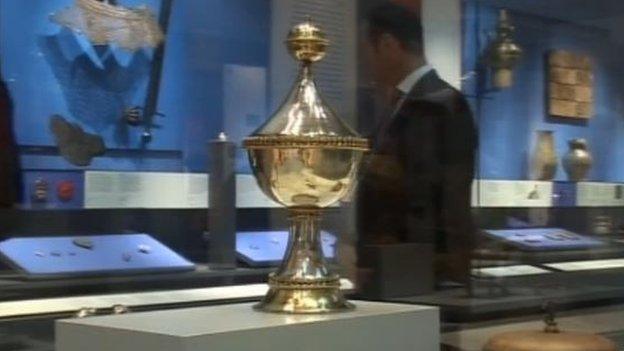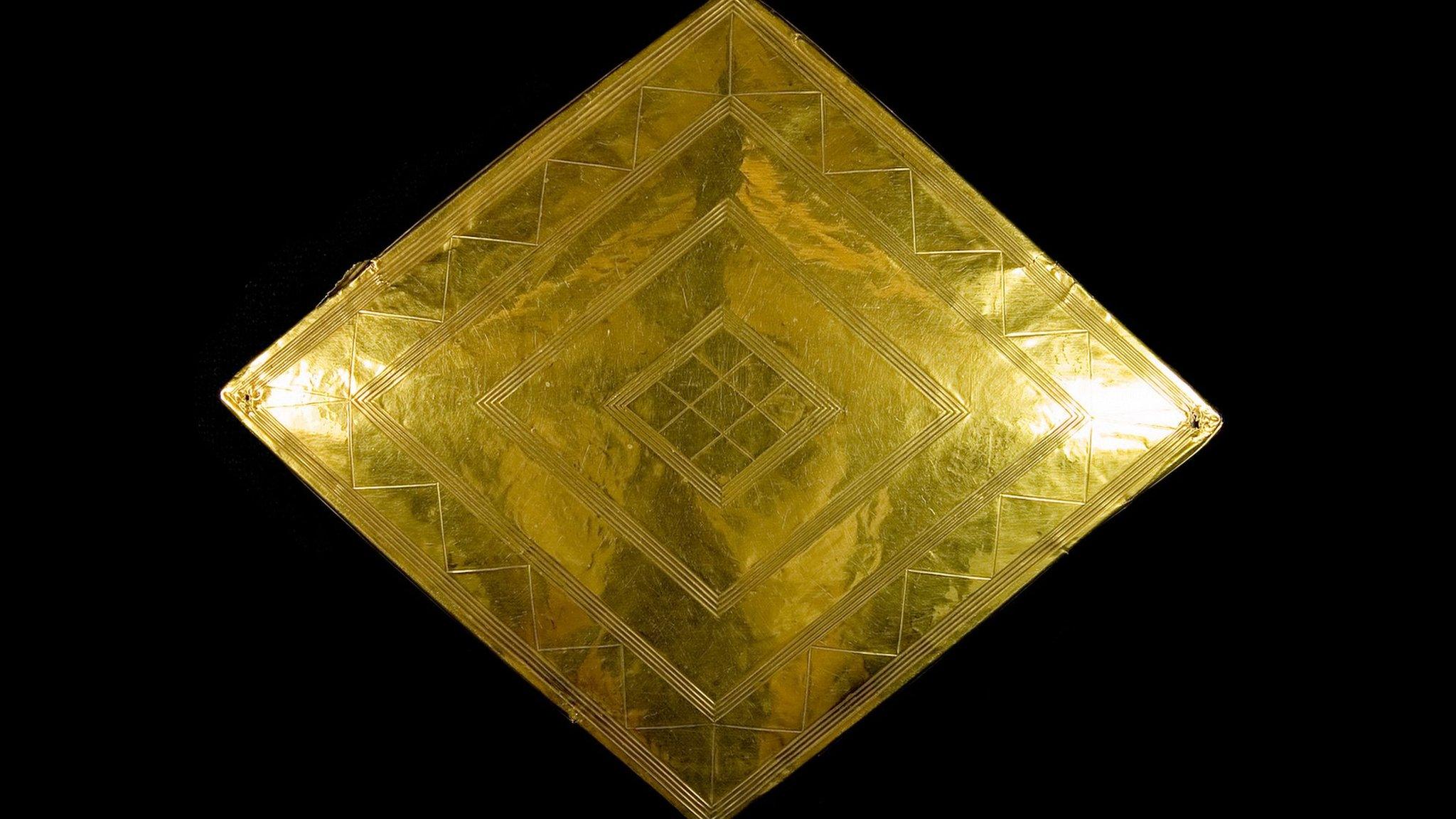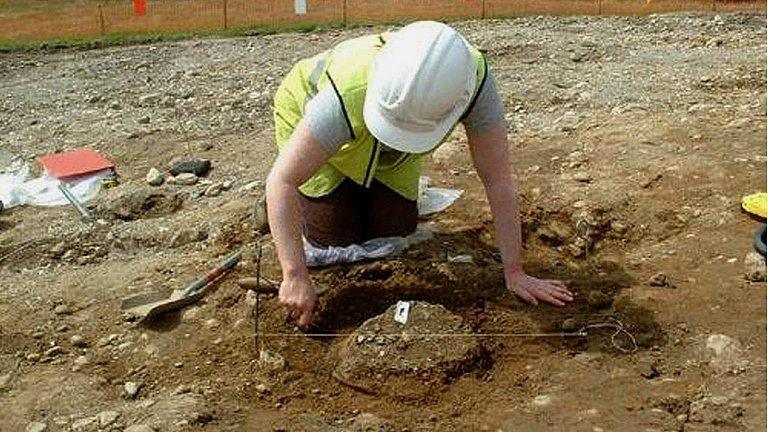'Rare sun disc' on show in Wiltshire for first time to mark solstice
- Published

Unearthed at Monkton Farleigh in 1947, it is one of only six ever found and one of the earliest metal objects discovered in the UK
A rare gold sun-disc discovered 20 miles (32km) from Stonehenge has gone on display to mark the summer solstice.
The early Bronze Age disc, thought to represent the sun, is on show for the first time at the Wiltshire Museum.
Unearthed at Monkton Farleigh in 1947, it is one of only six ever found and one of the earliest metal objects discovered in the UK.
David Dawson, from the museum, said it was "delighted" to be able to display "this incredibly rare sun-disc".
It was made in about 2,400 BC, soon after the sarsen stones were erected at Stonehenge.
Embossed with a cross and pierced with two holes, it is thought it may have been sewn to a piece of clothing or head-dress.
Discovered by Guy Underwood during an excavation of a burial mound at Monkton Farleigh, it was "kept safe" for nearly 70 years by landowner - Dr Denis Whitehead.
"The first time that it had been seen by archaeologists was when he [the landowner] brought it to show me in 2013," said Mr Dawson.
"It has now been presented to the museum in remembrance of Denis Whitehead and we are delighted to be able to display it."
- Published22 April 2015

- Published31 January 2015

- Published14 October 2013

- Published7 February 2013

- Published22 June 2012
